Impromptu Brand Work
I didn't intend to create a bunch of brand graphics. I just knew I was going to have to replace the default docusaurus logos with something.
I spent some time prompting AI to suggest me some logos. It didn't really get what I was after. But it did stir some ideas in me. In the end I settled on the UML 'lollipop' notation for an interface.
For anybody not familiar with UML, that looks like this:
The element on the right is going to perform some function. As part of that function, it needs to use another element. Before it can use the other element, it needs to know that that element has certain things or can do certain things.
That set of needed things is called an interface. The element on the left wants
to use that interface, the one on the right provides an implementation of that
interface. Usually an interface will have a name indicating what an object that
implements it is supposed to do. An object that fulfills a Downloadable
interface probably has a function on it called Download(). Different
Downloadable objects might do that operation in different ways, though.
I landed on this rough concept:
Conceptually, what that says is "IainDavis" is an entity that can do the set of things identified by the name "dev". It's graphically nice and clean, and it says something about what I do to people who are familiar with that kind of work.
Good so far. But then, it's a little TOO clean isn't it? Just sort of boring in black and white and default fonts.
The next thing I needed is some colors. I have some experience in colors and aesthetics, but I really kind of want to move along quickly with this thing and not get so hung up in every detail. What I really needed is a pre-defined set of colors that are going to look reasonably attractive together, be distinctive, and recognizable from a distance. Ideally, they should also relate to my work in some way, and they should be themable, since I want this website to be a showcase for what I can do. I should make the most of what Docusaurus offers, including dark and light themes.
It didn't take me long to land on using syntax highlighting colors. The ones I chose are from VS Code. The dark theme colors are from the default dark theme, and the light theme colors are from the Solarized Light theme.
The last thing I needed was fonts. I just picked a couple reasonably attractive monospace fonts: JetBrains Mono and Fira Code. The rest of my styles are just the Docusaurus defaults.
Alright, where are we at?
Light theme
Dark theme
Hey, that's pretty good! I will definitely use that. But it's a bit too wide to replace the Docusaurus logo in the navbar with. I need something more compact.
after some adjustments:
Light theme
Dark theme
Okay, that's good for the remaining stuff. But I still need a favIcon. The detail in that logo just gets completely lost at the resolution of a browser tab. I think I can probably just get away with the dark theme for this, though.
Alright! Clearly part of the same family of icons, but simple enough to read on a browser tab.
Cool. I think I'm done!
Until I have too long to sit in a Zoom meeting. Jeez this room looks cluttered. Even with the picture blurred. I look disorganized and messy. I should probably do some zoom backgrounds. I don't just want flat color though... and I did just upgrade my ChatGPT to plus, which means I can use DALL-E. Ah well, I've got fifteen minutes left in this workshop. Let's see what I can come up.
a couple hours later...
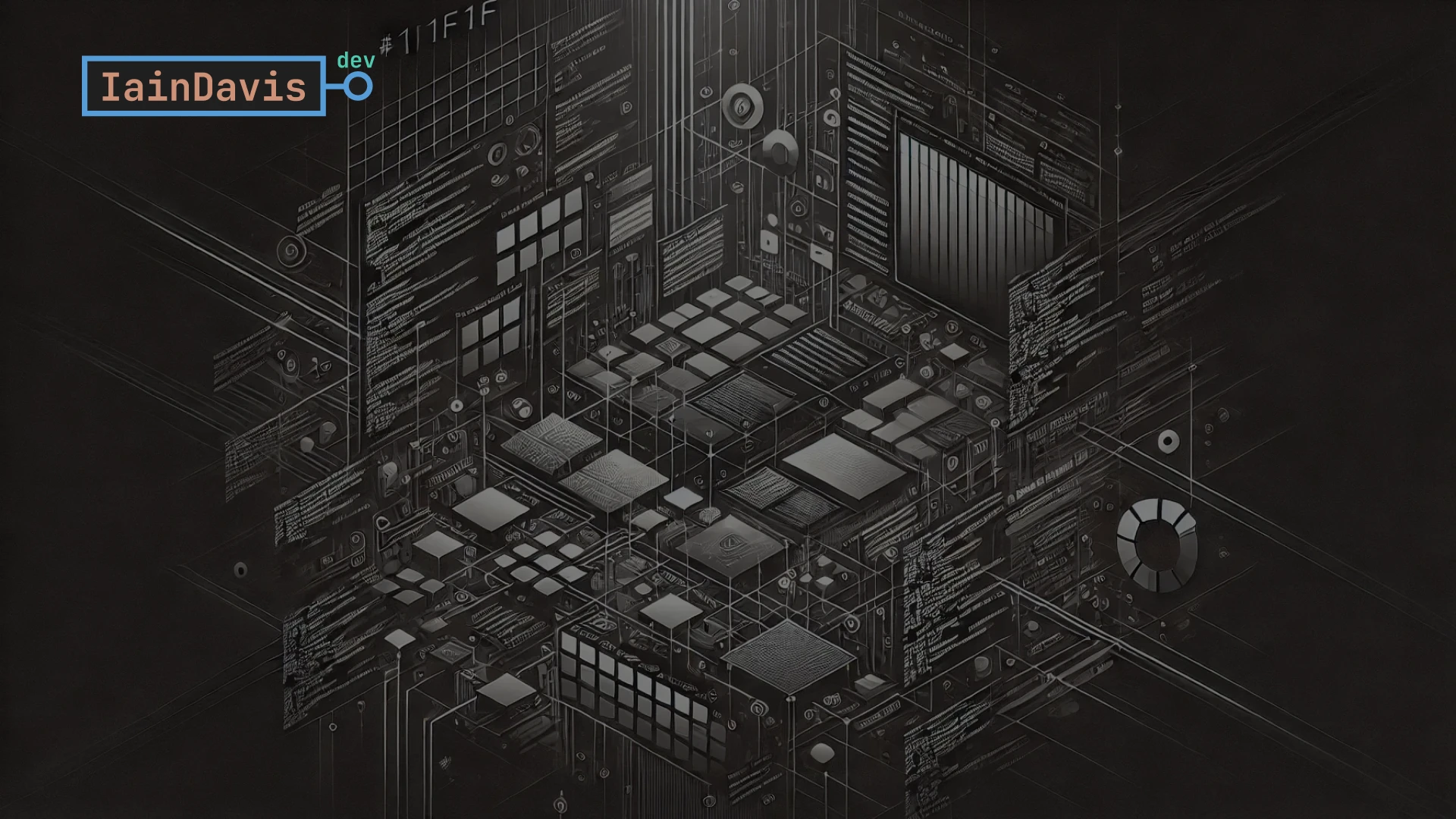
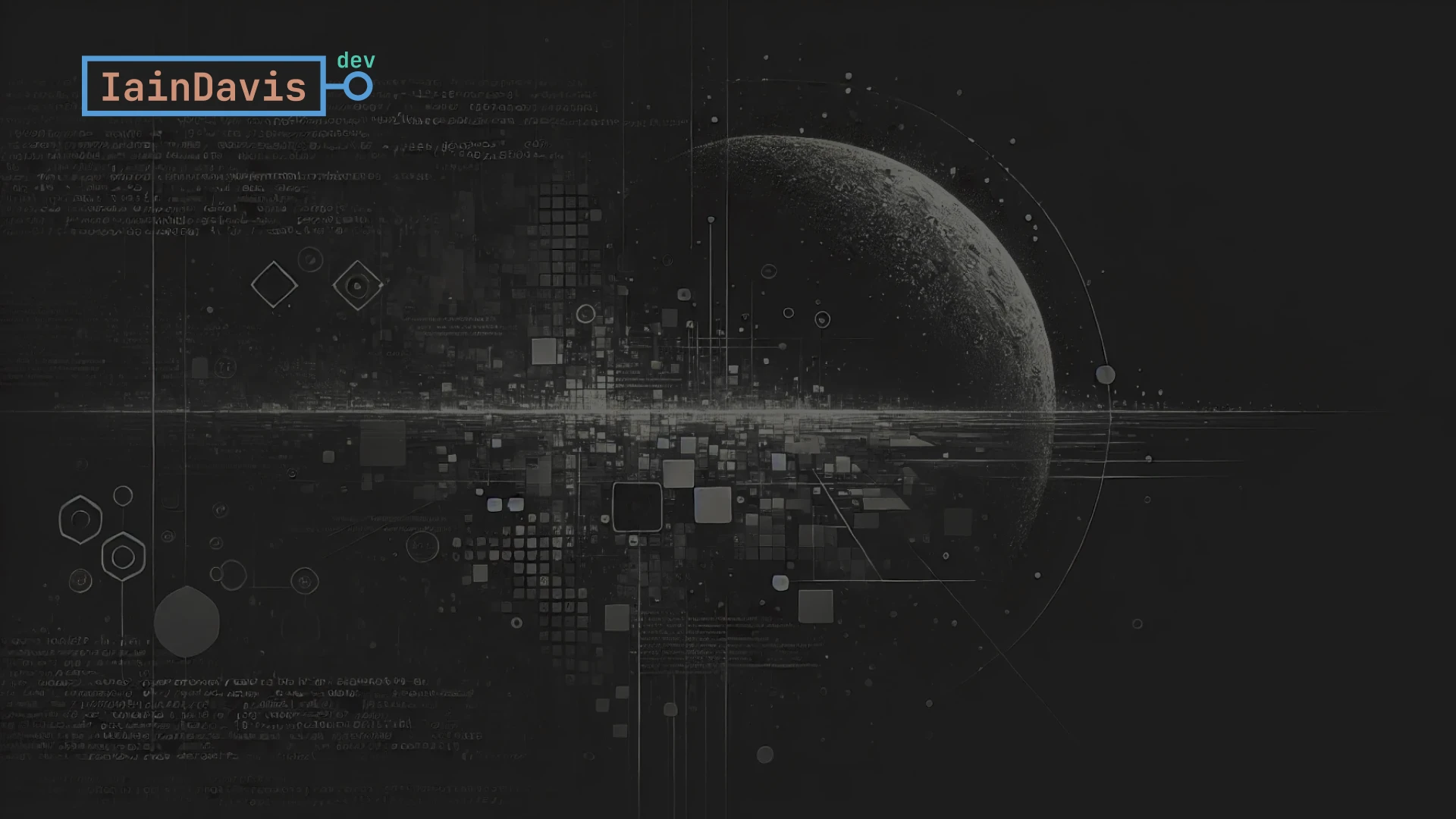
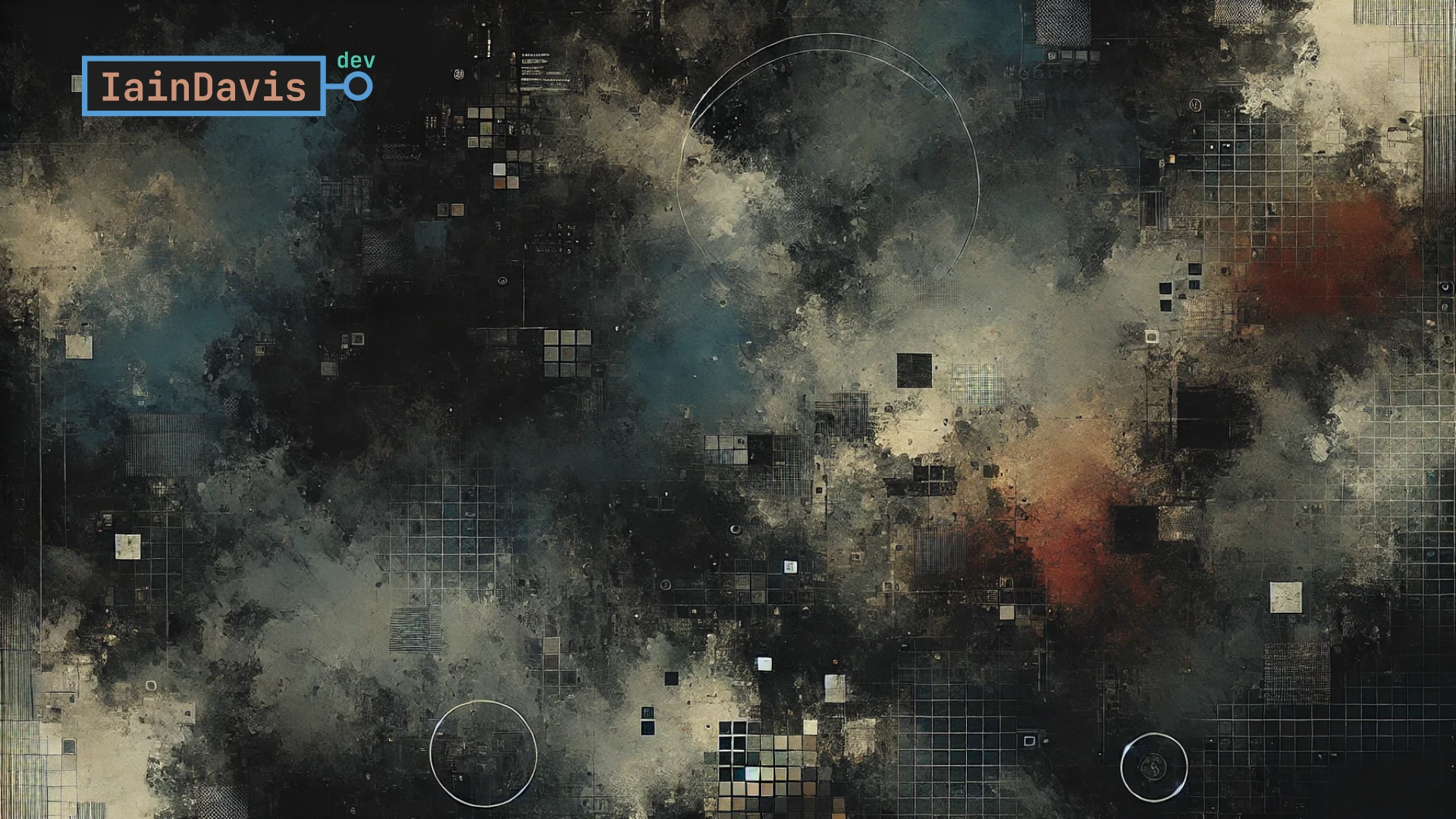
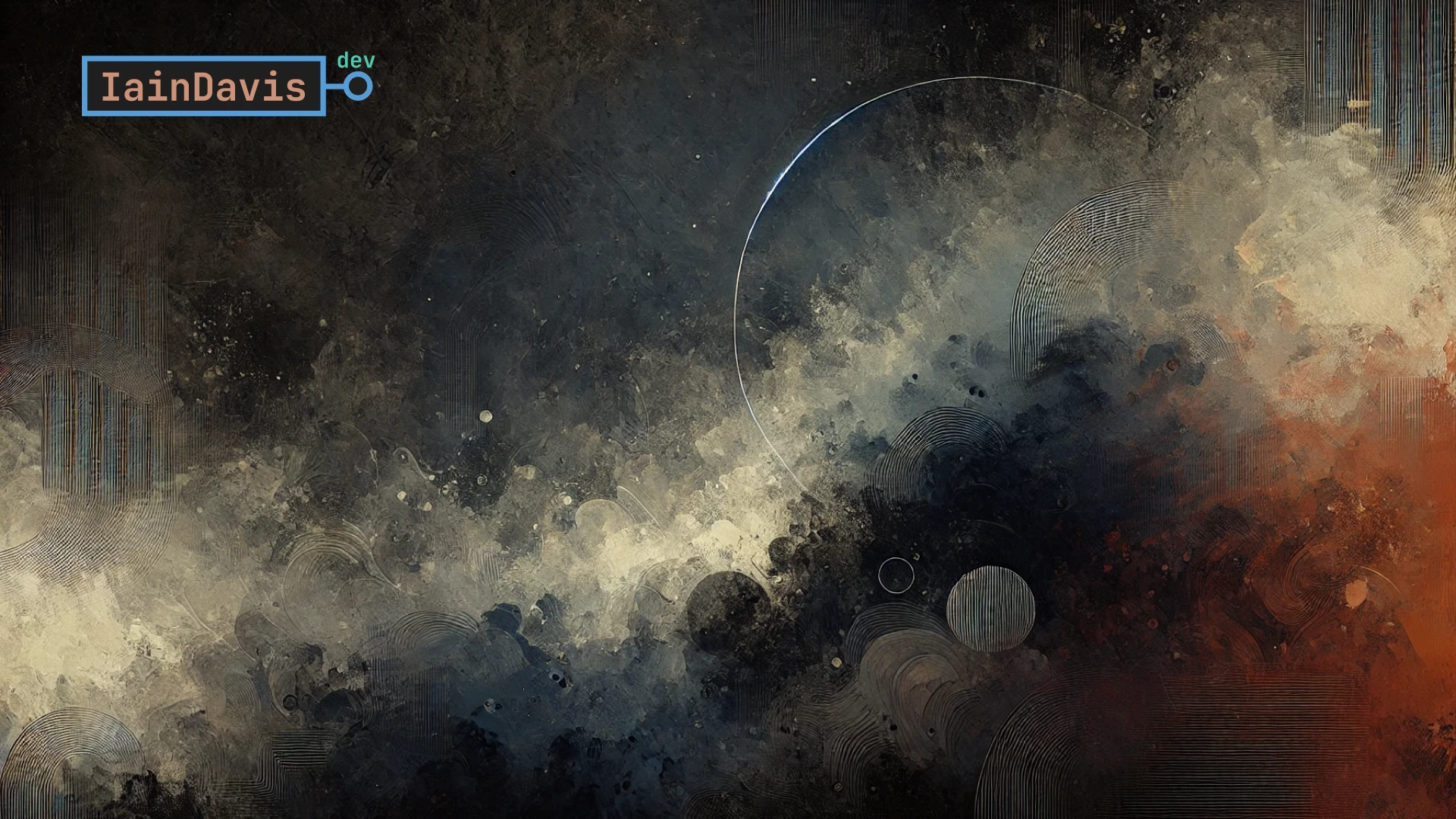
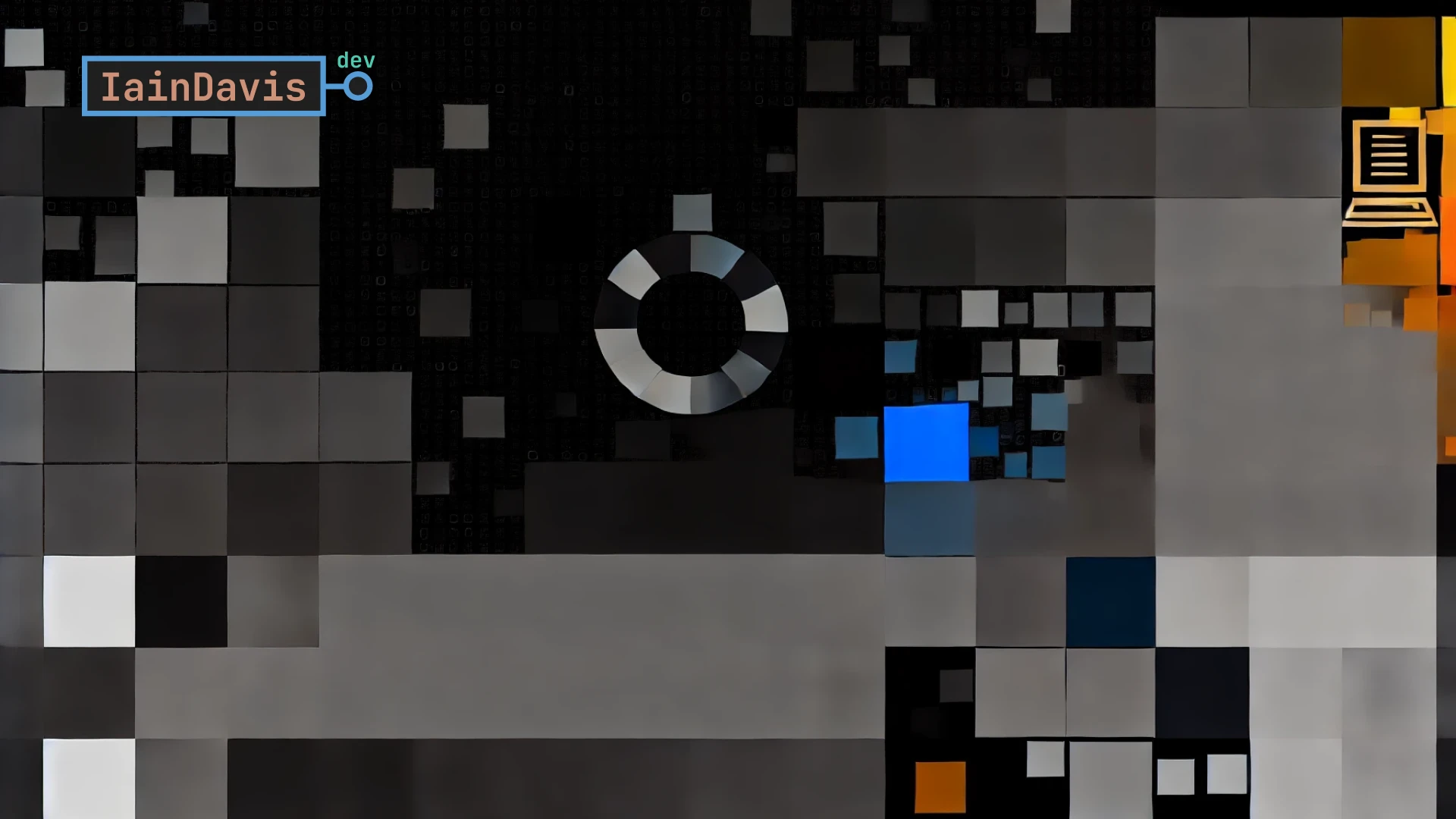
 ;
;
I had a lot of fun doing all these things, and as a result I have more consistent branding across my digital presences: LinkedIn, GitHub, this here website.
Initially, I thought I'd get by using the tools I already know best which, for
me, meant draw.io and Inkscape. Unfortunately draw.io does some strange stuff
when exporting SVGs with text content, and it doesn't readily give you a way to
convert text content into regular vectors, more's the pity. And Inkscape, while
powerful, proved unequal to the task of correcting draw.io's shortcomings.
Okay, so great for diagrams with loads of annotations, not so good for visual arts.
In the end I opted to go for Figma. It's what all the design-type people at Intuit use, and I'm glad I chose it. It made the whole process easier. I actually re-implemented all of the above graphics all over again from scratch in Figma, and I learned a lot about that tool along the way.
What I learned doing this
AI
I'm always learning more about how to get AI to do things I want it to do. I never really did get it to do precisely what I wanted... getting DALL-E to give you something without a point of focus that doesn't try to make use of the full spectrum from light to dark is surprisingly difficult. It's learned a lot of rules about what makes a picture 'good' that it doesn't want to unlearn. But I didn't want "art" so much as "texture". I want to be the focus in my Zoom call.
I did ask it to give me things that evoke technology, and particular the process of designing software, and it did surprisingly well at that task, I think.
Figma
Figma is pretty great! I think by far my favorite thing was discovering I could do theme-ing right in the tool. If you look at my Figma for this work, there's a dark and light version of each logo... those are actually copies of the exact same object, just with a different set of variables applied. I was so interested in that, I shelled out the $144 for a paid license for a year. Super cool.
And now I have all my brand materials consolidated in one place, which is nice.
